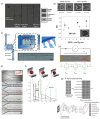Pathophysiological Associations and Measurement Techniques of Red Blood Cell Deformability
- PMID: 41002306
- PMCID: PMC12467927
- DOI: 10.3390/bios15090566
Pathophysiological Associations and Measurement Techniques of Red Blood Cell Deformability
Abstract
Red blood cell (RBC), accounting for approximately 45% of total blood volume, are essential for oxygen delivery and carbon dioxide removal. Their unique biconcave morphology, high surface area-to-volume ratio, and remarkable deformability enable them to navigate microvessels narrower than their resting diameter, ensuring efficient microcirculation. RBC deformability is primarily determined by membrane viscoelasticity, cytoplasmic viscosity, and cell geometry, all of which can be altered under various physiological and pathological conditions. Reduced deformability is a hallmark of numerous diseases, including sickle cell disease, malaria, diabetes mellitus, sepsis, ischemia-reperfusion injury, and storage lesions in transfused blood. As these mechanical changes often precede overt clinical symptoms, RBC deformability is increasingly recognized as a sensitive biomarker for disease diagnosis, prognosis, and treatment monitoring. Over the past decades, diverse techniques have been developed to measure RBC deformability. These include single-cell methods such as micropipette aspiration, optical tweezers, atomic force microscopy, magnetic twisting cytometry, and quantitative phase imaging; bulk approaches like blood viscometry, ektacytometry, filtration assays, and erythrocyte sedimentation rate; and emerging microfluidic platforms capable of high-throughput, physiologically relevant measurements. Each method captures distinct aspects of RBC mechanics, offering unique advantages and limitations. This review synthesizes current knowledge on the pathophysiological significance of RBC deformability and the methods for its measurement. We discuss disease contexts in which deformability is altered, outline mechanical models describing RBC viscoelasticity, and provide a comparative analysis of measurement techniques. Our aim is to guide the selection of appropriate approaches for research and clinical applications, and to highlight opportunities for developing robust, clinically translatable diagnostic tools.
Keywords: biomedical research; deformability; red blood cell.
Conflict of interest statement
The authors declare no conflicts of interest.
Figures





References
-
- Kim Y., Kim K., Park Y. Blood Cell—An Overview of Studies in Hematology. IntechOpen; London, UK: 2012. - DOI
Publication types
MeSH terms
LinkOut - more resources
Full Text Sources
Research Materials
Miscellaneous

